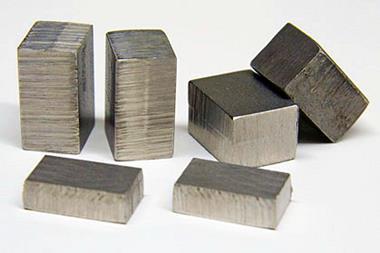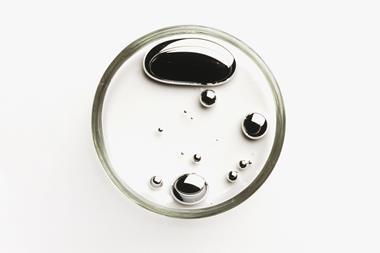The shiny and dense fluids offer both ancient mystery and future promise
Liquid metals are so outside our usual experience that it’s hard not to see them as some sort of otherworldly, almost magical substance. No liquids we routinely encounter are metallic in the least, and any molten metals we see are normally glowing hot and thus viewed at a distance. Perhaps it’s mercury’s poisonous reputation we have to thank for that – my only lab experience of liquid metals was confined to the inside of thermometers, safe in the knowledge there was a mercury spill kit somewhere nearby in case of accidents. That the futuristic – and deadly – T-1000 in the second Terminator film was made of a mimetic polyalloy (or ‘liquid metal’, as Arnold Schwarzenegger so memorably intoned) was no coincidence.

It’s no wonder that as chemists we have therefore neglected to study these mysterious fluids, especially when coupled with the fact that they’re very difficult to probe using the usual arsenal of techniques. But it’s still eye-opening to read in James Mitchell Crow’s feature on p24 that until recently, we didn’t really know what sort of species one metal dissolved in another forms. Are they complexes, clusters or individual atoms?
It’s no wonder that as chemists we have therefore neglected to study these mysterious fluids, especially when coupled with the fact that they’re very difficult to probe using the usual arsenal of techniques. But it’s still eye-opening to read in James Mitchell Crow’s feature on liquid metal catalysts that until recently, we didn’t really know what sort of species one metal dissolved in another forms. Are they complexes, clusters or individual atoms?
Computer modelling predicts the latter, which goes partly to explain why these sorts of liquid alloys are finding uses in catalysis – the similarity with single- or few-atom catalyst clusters on solid supports is striking. But the similarity only goes so far – it turns out that the individual metal atoms are not necessarily the active species after all.
The huge range of possible alloy mixtures that could be explored must be an enticing prospect for researchers in this area, and perhaps we can hope to see some spectacular catalysts reported in the future. Whether they will end up useful on an industrial scale is still an open question, but with potentially huge differences in density compared to the reactants and products, they should at least be easy to separate after a reaction.
With liquid metals – in the form mercury and its amalgams at least – known since ancient times, it’s heartening to think that chemists are still capable of finding new tricks for old dogs to play. It’s one of the great joys of chemistry, after all: the elements and compounds being studied by previous generations haven’t changed in the intervening time. Theories and experimental techniques may change, but atoms do not. We can only wonder what future generations of chemists will make of the compounds being made now.

















No comments yet